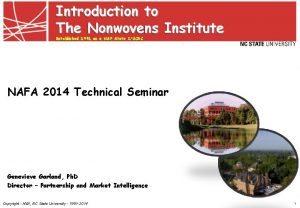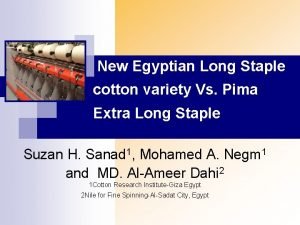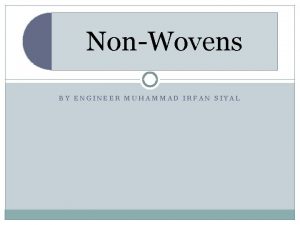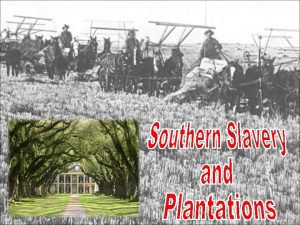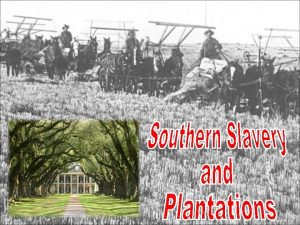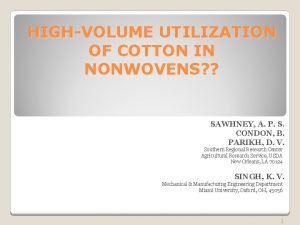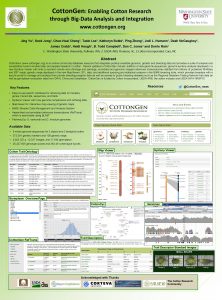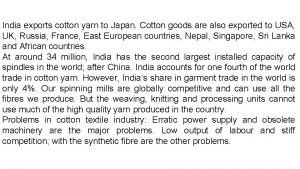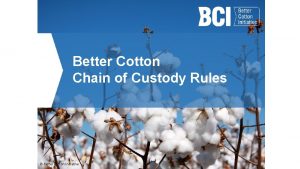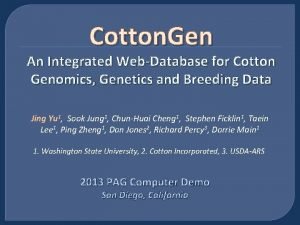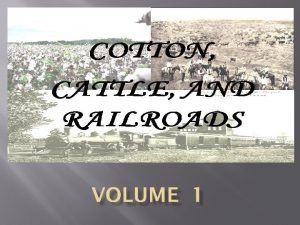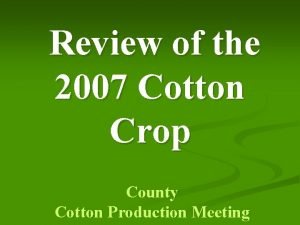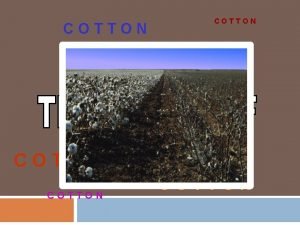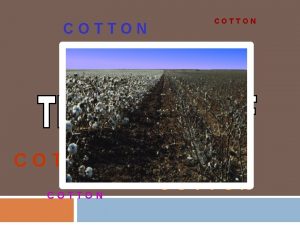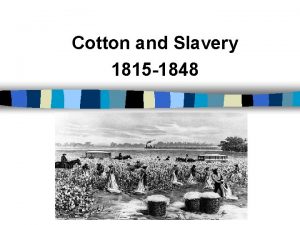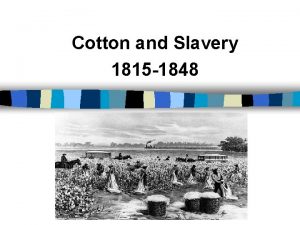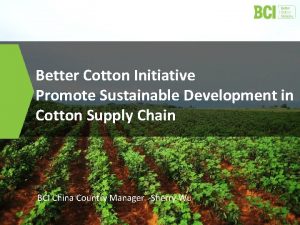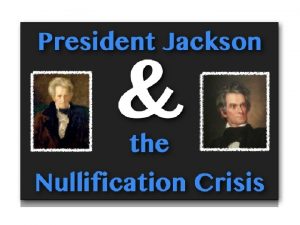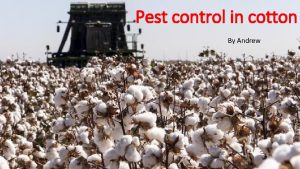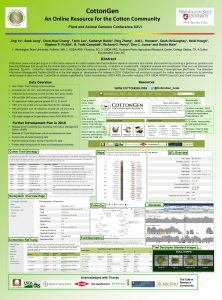A New Nonwovens Cotton Research Line for SRRCUSDA



























- Slides: 27

A New Nonwovens Cotton Research Line for SRRC/USDA Featuring the “Lilliput” Nonwoven Line Presented by: Max Cochran, Louis P. Batson Company

Introduction – Nonwovens Market n The global nonwovens industry is currently valued at more than $14 billion at the roll goods level and many times that in terms of end use markets. n Opportunities in this segment continue to hold for growth and have made it an attractive one around the world. In fact, growth of nonwovens continues to outperform that of related industries such as traditional textiles and paper. n The industry has not been impacted largely by the textiles’ segment movement into Asia. In fact, nonwovens’ sophisticated technology coupled with its low labor intensity has protected it from Asian competition. n Instead, Asia has presented itself as a strong growth area for many western-based nonwovens manufacturers who are looking to expand their businesses.

Introduction – Nonwovens Market n By far, the largest market for nonwovens globally remains disposable baby diapers ($21 billion worldwide). Other hygienerelated areas such as feminine hygiene, adult incontinence items and disposable wipes as well as a variety of industrial applications ranging from automotives to home furnishings to roofing and construction to protective apparel continue to be strong application areas for nonwovens. n In terms of market penetration, the developed regions of North America and Europe are more mature, particularly in the hygiene segments where most consumers already use disposable diapers and feminine hygiene items. n Despite this penetration, however, growth continues. According to statistics, the European nonwovens industry grew 5% to $6 billion (€ 4. 5 Billion) last year while North American nonwovens sales increased 4% to $5 billion.

n Beyond these areas, growth has been more dramatic, albeit from a lower base. In both the Asia-Pacific and Latin American regions, nonwovens have been growing between 8 -9% a year. n Looking forward, growth of nonwovens is expected to come from increased penetration of existing applications in developing markets as well as new application areas in developed regions with manufacturers investing in new capacity around the globe. Companies situated throughout the nonwovens supply chain are expected to benefit from this growth. Introduction – Nonwovens Market

Introduction – “Lilliput” Nonwoven Line n n Specially designed by Technoplants, s. r. l. for laboratory tests and trials. Same characteristics as full-sized production machinery. One meter wide; uses less raw material per run. Interesting fact: named after the tiny people of Lilliput in Gulliver’s Travels.

Case Study: Southern Regional Research Center, United States Department of Agriculture New Cotton Research Line featuring the “Lilliput” Nonwoven Line

Case Study – SRRC/USDA n In August 2007, the Southern Regional Research Center of the United States Department of Agriculture (USDA), located in New Orleans, purchased a new nonwovens cotton research line to replace equipment lost to Hurricane Katrina. n The “Lilliput” nonwoven line will use the SRRC laboratory’s existing Crosrol Card to feed a cotton mat into the “Lilliput” Crosslapper (pictured right).

Case Study – SRRC/USDA n The mat will then enter a Pre. Needle Loom that provides downstroke needling action followed by up-stroke using two needle boards and a working width of 1 meter. The maximum input speed is 15 meters per minute. n Resulting fabric will be wound by a combined slitting and winding unit (pictured right).

“Lilliput” Nonwoven Line Components CROSSLAPPER MODEL CL. 1010. L Working Width: 1000 mm

“Lilliput” Crosslapper Model CL. 1010. L General description n The Crosslapper receives a fiber web from a carding machine positioned directly at its feeding side. n The web of fiber, after passing through a specific passage of conveyors inside the Crosslapper, is then laid down at an angle of 90º onto a floor apron. n Due to the ratio between the feeding speed (out of the carding machine) and exit speed of the floor apron (below the crosslapper), a predetermined number of web layers per square meter will be crosslapped and delivered to the next machine in line.

“Lilliput” Crosslapper Model CL. 1010. L General description (continued) n The Crosslapper is driven by a series of motors and inverters and controlled via a PLC and touch screen. n A series of limit switches control all movements of the machine. These and the PLC guarantee a particular preciseness of the lapping action and an easy control of the machine by the operator.

“Lilliput” Crosslapper Model CL. 1010. L General description (continued) 1. 2. 3. 4. 5. 6. 7. 8. Frame structure Feeling Rollers Distribution Carriage Compensation Carriage Drive for the conveyor aprons Drive for the cartridges Delivery Cartridge For vertical adjustment of the floor apron

“Lilliput” Crosslapper Model CL. 1010. L Technical Characteristics Model …………………. . Crosslapper Type …………………. CL. 1010. L Fibers that can be processed …. Natural and/or synthetic card webs Max feeding width ………………… 1000 mm Max delivery width ………………. . 1000 mm Min/Max production speed ……. . 2/20 meters per minute Voltage Range …………… 3 x 480 V – 60 Hz Electric control circuit voltage … 110 V Installed power …………. . 262 KW Noise level ……………… < 78 d. B Vibrations ………………. None

“Lilliput” Nonwoven Line Components PRE-NEEDLE LOOM MODEL PR. 40. DUO. 10 Needling Action: down-stroke followed by up-stroke

“Lilliput” Pre-Needle Loom Model PR. 40. DUO. 10 General Description Working width ………………… 1000 mm Strokes per minute ……………… 700 rpm Needles per linear meter (per board) ………… 4, 000 + 4, 000 (8, 000 total) Stroke length …………………… 60 mm Number of boards ……………… 2 Maximum input speed …………… 15 meters/minute

“Lilliput” Pre-Needle Loom Model PR. 40. DUO. 10 General Description (continued) n Needle Looms are made according to a finite element analysis code (Ansys) that is used to design all aspects of the machine. This enables an engineer to study all types of vibration and stress which have an impact on the main frame, the needle beam, the crankshaft and connecting rod movements during operation. n The frame is assembled and after welding it is stress relieved at 600º C before being machined. n The drive modules which generate the movement of the needle board(s) are fitted inside the top and/or bottom of the frame.

“Lilliput” Pre-Needle Loom Model PR. 40. DUO. 10 General Description (continued) n Each half-module is composed of two main connecting rods. Each crankshaft has two counter-rotating flywheels. This is to reduce the vibration to a minimum. Each connecting rod is standard cooled by forced air with no fiber contamination. n The flywheels are driven by a helical gear reduction box which is oil lubricated. After assembling, all looms undergo a test run where the vibration level is checked and reduced to under 0. 1 mm by balancing all mechanisms. n The needle penetration and the stripper plate(s) are independently adjustable by AC motors that drive a series of screw jacks - two for the stripper plate and two for the needle penetration. The position of the stripper plate and the needle penetration can be seen on the control panel.

“Lilliput” Pre-Needle Loom Model PR. 40. DUO. 10 General Description (continued) n The main drive is an AC motor and inverter. n All adjustments are possible on the control panel via potentiometers. The various positions of the stripper plate and the needle penetration can be seen by a series of displays. n The needle loom is sound-proofed with a special material. Safety devices are added to avoid accidents. n All looms are equipped with a draw-off calendar. Pneumatic cylinders for the gap adjustment are used.

“Lilliput” Pre-Needle Loom Model PR. 40. DUO. 10 Specific Characteristics of the “DUO” (Tandem) Version n “Tandem” means the machine is working with DOWN and UP needling action. n Each motor is independently adjustable so the needling action is possible with down stroke different from up stroke. n Even the stripper and bedplate are independent.

“Lilliput” Pre-Needle Loom Model PR. 40. DUO. 10 Drawing of Pre-Needle Loom

“Lilliput” Nonwoven Line Components COMPRESSIVE BATT FEEDING SYSTEM MODEL 2 BSF

“Lilliput” Compressive Batt Feeding System General Description of Model 2 BSF n This is a universal system made up of two converging conveyors with PVC slats. The conveyor takes the fiber batt to the finger rollers which compress it further. n The batt feeding system enables the operator to use the loom either as a pre-needle or a finish-needle loom. n Characteristics of the Model 2 BSF allow the dimensional features of the fiber batt to be preserved. For many applications, this can ensure zero detrimental draft. n The system is adjustable to adhere as closely as possible to the first needle row. The stripper and bedplate are shaped to fit the finger’s profile.

“Lilliput” Nonwoven Line Components COMBINED SLITTING AND WINDING UNIT MODEL LC/WM 10 -M. L.

“Lilliput” Combined Slitting & Winding Unit General Description of Model LC/WM 10 -M. L. n The combined slitting and winding unit receives the needled felt from the draw off calendar of the preneedle loom. n Then it slits the felt according to the preset width and winds it on the winding unit.

“Lilliput” Combined Slitting & Winding Unit General Description (continued) 1. 2. 3. 4. Frame Structure Slitting Blades Rising Roll Batcher Main Drive Unit

“Lilliput” Nonwoven Line CONTACT INFORMATION

“Lilliput” Nonwoven Line Manufactured and Designed By: For Additional Information, Contact: Mr. Max Cochran PO Box 3978, Greenville, SC 29608 P: 864 -242 -5262 • F: 864 -271 -4535 E-mail: maxcochran@lpbatson. com • Website: www. lpbatson. com
 The nonwovens institute
The nonwovens institute Cotton on the roadside cotton in the ditch
Cotton on the roadside cotton in the ditch Egyptian vs pima cotton
Egyptian vs pima cotton Split speech example
Split speech example 66454 subject code
66454 subject code Fspos
Fspos Novell typiska drag
Novell typiska drag Nationell inriktning för artificiell intelligens
Nationell inriktning för artificiell intelligens Returpilarna
Returpilarna Shingelfrisyren
Shingelfrisyren En lathund för arbete med kontinuitetshantering
En lathund för arbete med kontinuitetshantering Underlag för särskild löneskatt på pensionskostnader
Underlag för särskild löneskatt på pensionskostnader Tidböcker
Tidböcker Sura för anatom
Sura för anatom Vad är densitet
Vad är densitet Datorkunskap för nybörjare
Datorkunskap för nybörjare Boverket ka
Boverket ka Debatt artikel mall
Debatt artikel mall Delegerande ledarstil
Delegerande ledarstil Nyckelkompetenser för livslångt lärande
Nyckelkompetenser för livslångt lärande Påbyggnader för flakfordon
Påbyggnader för flakfordon Formel för lufttryck
Formel för lufttryck Offentlig förvaltning
Offentlig förvaltning Jag har gått inunder stjärnor text
Jag har gått inunder stjärnor text Presentera för publik crossboss
Presentera för publik crossboss Vad är ett minoritetsspråk
Vad är ett minoritetsspråk Plats för toran ark
Plats för toran ark Treserva lathund
Treserva lathund
